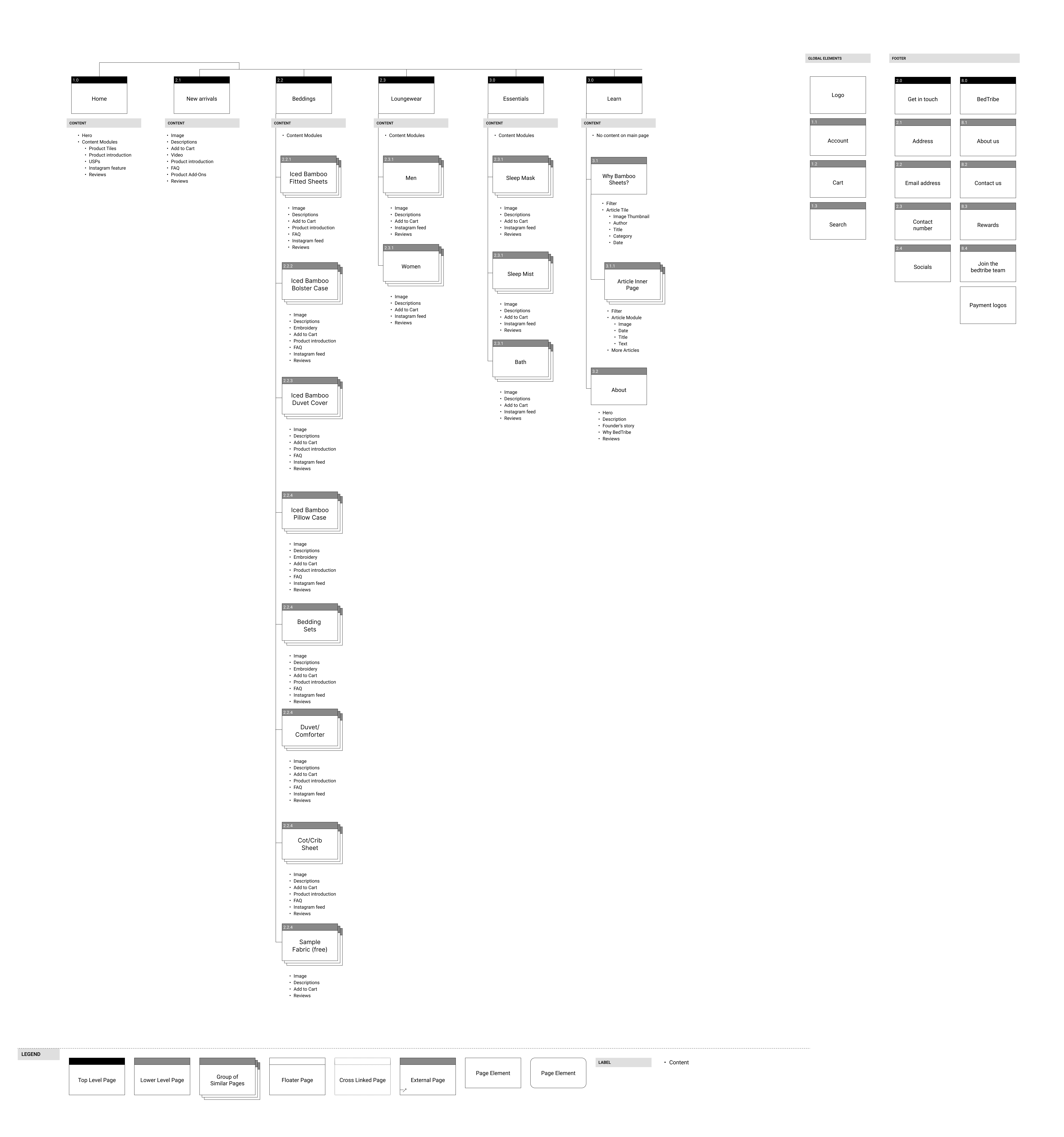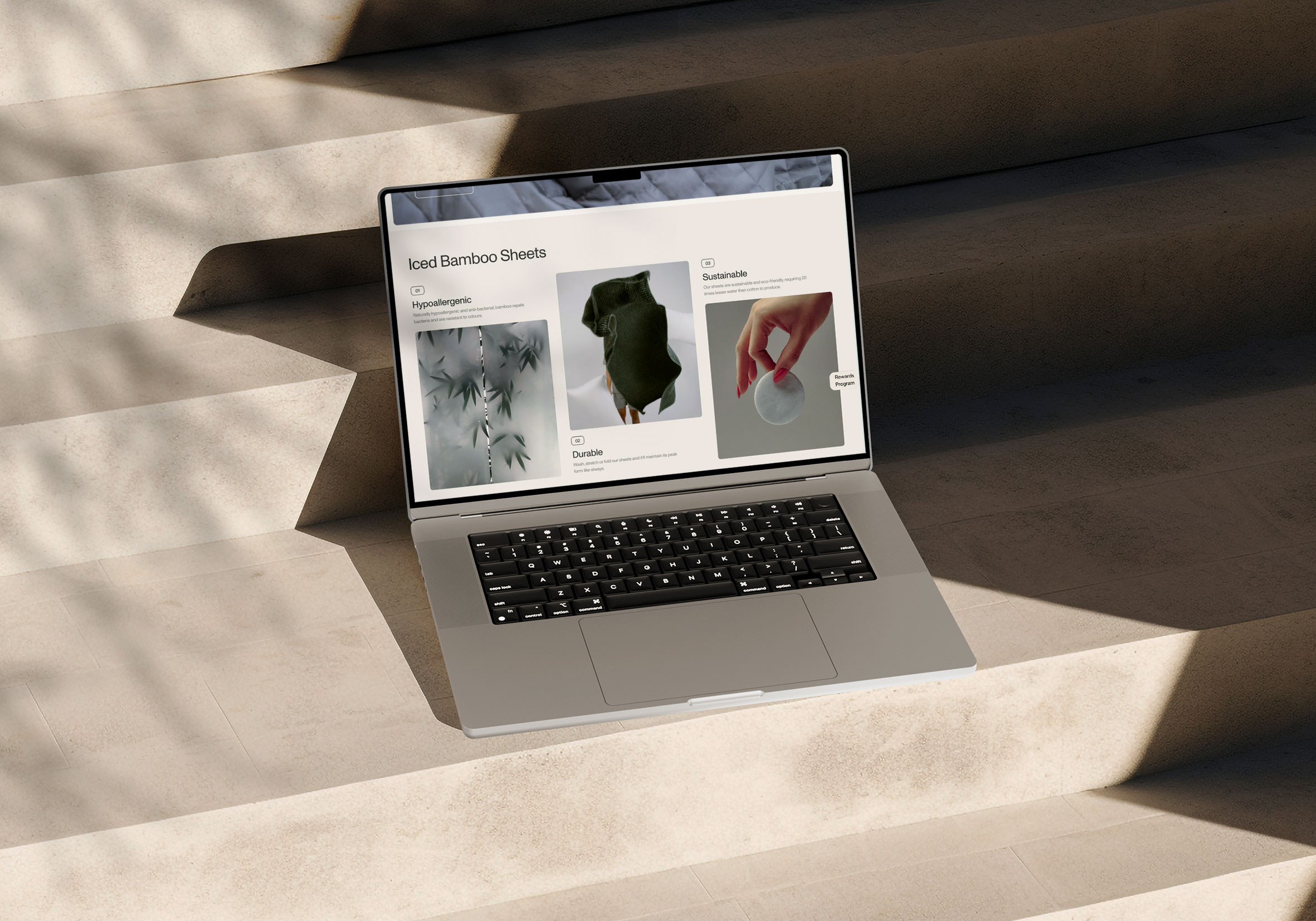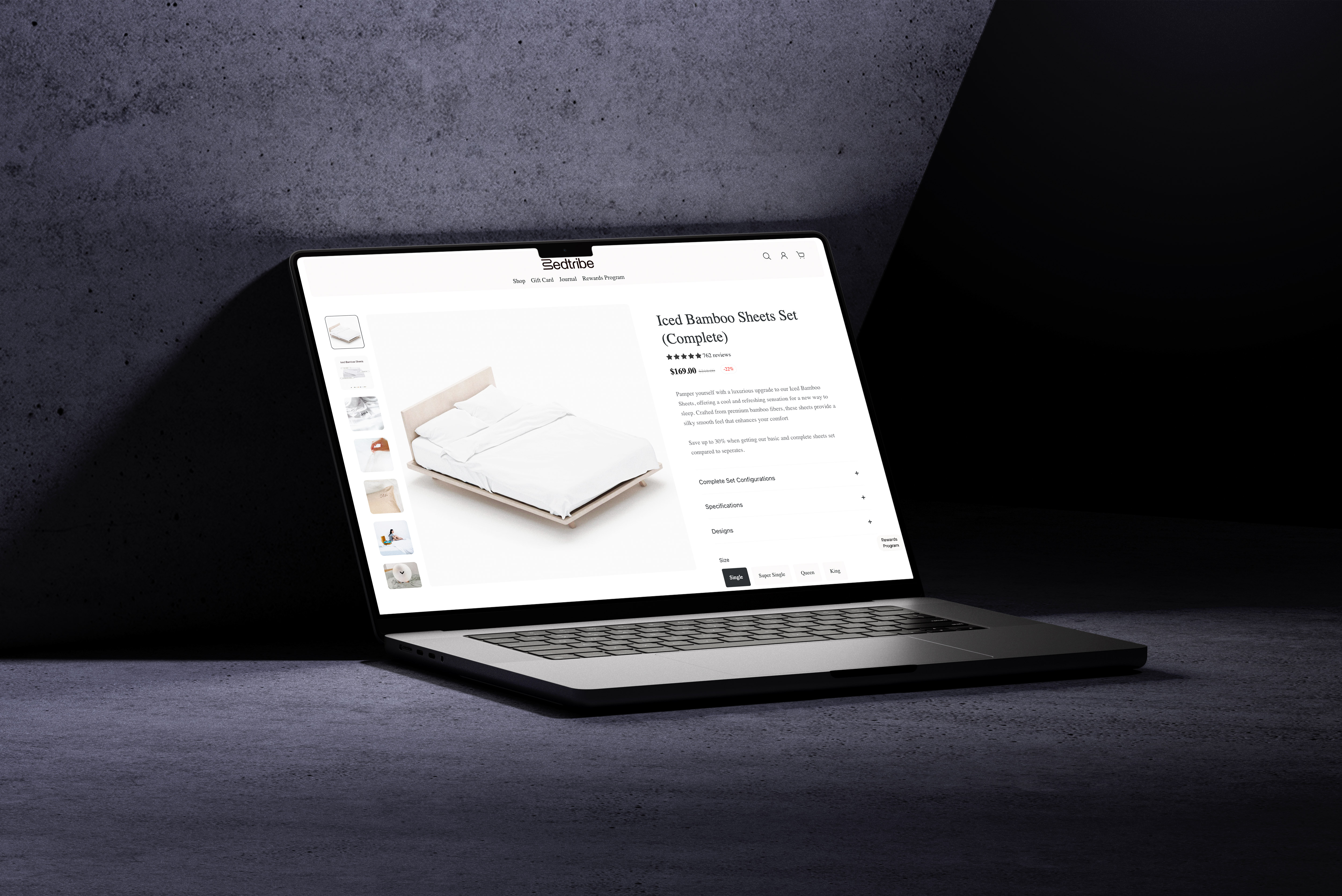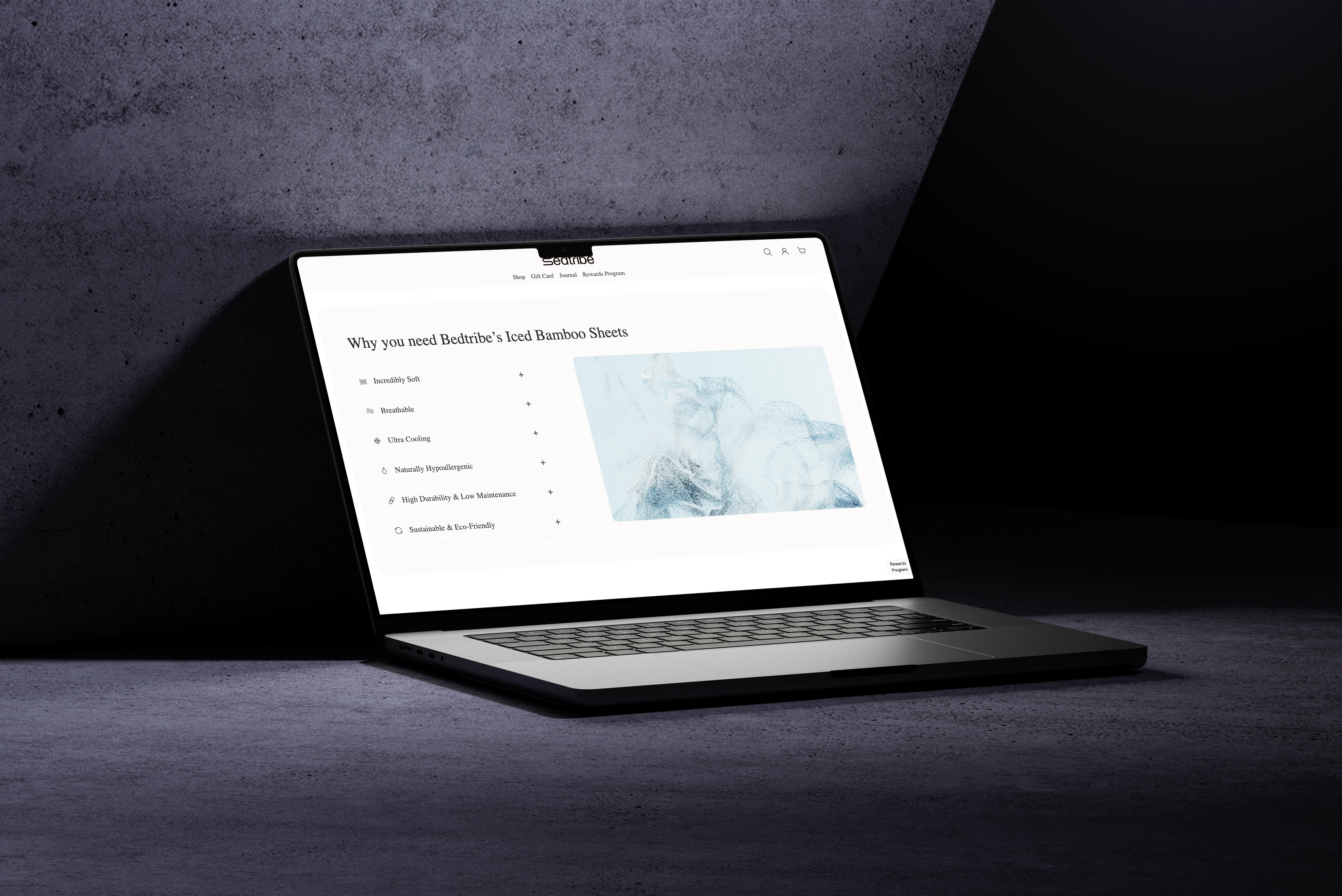Background
Revamp Bedtribe's website to reflect its brand values of comfort
Bedtribe is a homegrown bedding company in Singapore known for its affordable, hotel-quality sheets and sleep essentials. As the brand grew in popularity, there was a clear opportunity to elevate its digital presence and streamline the online shopping experience.
The goal of this project was to revamp Bedtribe’s website to reflect its brand values of comfort, simplicity, and modernity, while addressing usability pain points in the current site. The UX work involved a complete redesign of the information architecture, user flows, and product discovery journey to improve conversion and retention.












